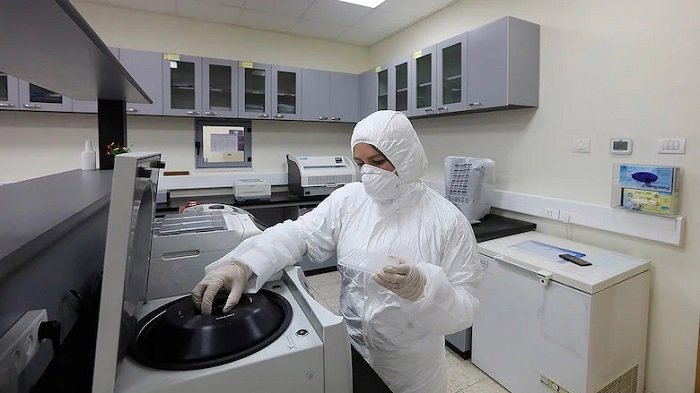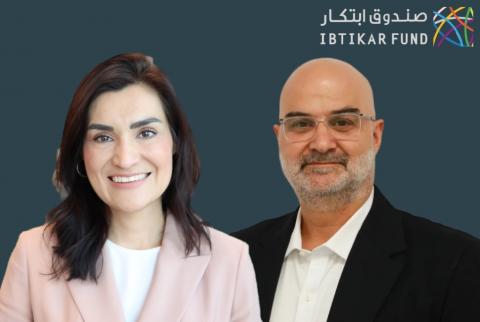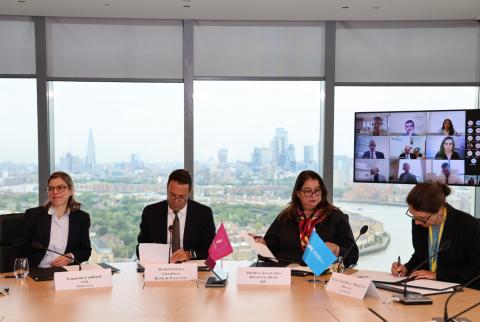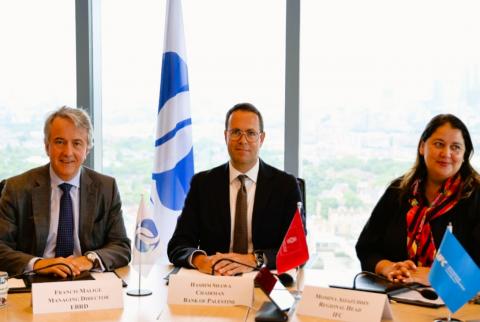
JERUSALEM-(BNEWS)- According to a new World Bank report, the Palestinian economy is expected to continue operating well below its potential. Growth is projected to hover around 3 percent and given population growth trends, income per capita is thus expected to stagnate, negatively impacting living standards. In addition, a combination of fiscal constraints and the restrictions imposed by Israel hinder access to healthcare, adversely affecting the population, especially in Gaza.
The Palestinian Economic Monitoring Report, titled “Racing Against Time”, will be presented to the Ad Hoc Liaison Committee (AHLC), a policy-level meeting for development assistance to the Palestinian people, in New York on September 20, 2023. The report highlights the economic challenges facing the Palestinian territories and describes the constraints affecting health services.
"Over the last 5 years, the Palestinian economy has basically been stagnating, and is not expected to improve unless policies on the ground change," said Stefan Emblad, World Bank Country Director for West Bank and Gaza.
"The Palestinian territories have been in a de facto customs union with Israel for thirty years, but contrary to what was expected when the agreements were signed, the divergence between both economies has continued to widen, with income per capita in Israel almost 14-15 times higher than in the Palestinian territories. Poverty rates are stubbornly high, as roughly 1 out of 4 Palestinians lives below the poverty line. Our report reminds all parties of the vital urgency to act to spur per capita growth, as well as to put the fiscal situation on a sounder footing," added Emblad.
The Palestinian economy remains at high risk under a multi-layered system of Israeli restrictions on movement and trade in the West Bank, a near-blockade of Gaza, an internal divide between the West Bank and Gaza, severe fiscal constraints and an unfinished reform program of the Palestinian Authority (PA) and several years of declining foreign assistance.
So far in 2023, public revenues have increased noticeably; however, expenditures have also continued to grow, mainly driven by a rising public wage bill. Taking into account the only partial implementation of recent agreements between the government and labor unions, and the Israeli deductions from revenues collected on behalf of the PA (known as ‘clearance revenues’) of about US$256 million, as well as donor contributions, the deficit is expected to reach US$493 million in 2023 or 2.5 percent of GDP. Should labor agreements be fully implemented, the deficit would increase further, reaching 2.7 percent of GDP.
The main concern in this context is that financing options are becoming increasingly limited, and the deficit is expected to continue being financed through arrears with private suppliers, the public pension fund, and public employees (who have already been receiving only 80-85 percent of their wages since late 2021). The relentless accumulation of additional arrears would – in the long run – affect market liquidity and could eventually choke economic activity, with devastating effects on poverty levels as well as on social stability.
PA reform efforts are necessary but not sufficient to achieve much-needed growth and fiscal sustainability. Garnering more financial support from donors is also important and cooperation by the Government of Israel is vital. The latter includes the transfer to the PA of revenues collected from Israeli businesses operating in Area C, the transfer of all VAT on Israel-Gaza trade to the PA, a full implementation of the e-VAT clearance system through the adoption of legislation mandating its use, and greater transparency of the clearance revenues’ deductions.
"The fiscal constraints weigh heavily on the Palestinian health system and particularly on its ability to cope with the mounting burden of non-communicable diseases. The many barriers to healthcare access have turned the system of outside medical referrals for treatment in non-Palestinian hospitals into a complex process - one that is affected by restrictions on the movement of Palestinian patients and a lengthy, bureaucratic regime of permits, often making it very hard to provide adequate or timely life-saving healthcare," added Emblad.
Significant physical and administrative constraints limit timely access to outside medical referrals (OMRs) for the treatment of cancers, heart disease, maternal and child health conditions, which are unavailable in public hospitals in the West Bank & Gaza. The Israeli occupation, the fragmentation of the Palestinian territories, and the broader macro-fiscal context described above have significantly impacted the Palestinian healthcare system’s ability to deliver these services in public hospitals. The situation is particularly critical in Gaza, which suffers from a more limited health system capacity and where patients struggle to get needed medical exit permit applications on a timely basis.
The OMR process involves a complex system of patient and financial flows. Approximately 42,000 permit applications are filed each year by patients alone (i.e., excluding companions), as a vast majority of patients need to obtain a permit from Israel to access OMR. The rate of OMR permit approvals varies from year to year, and the same patient can be denied, delayed, or accepted at different phases of the care continuum, highlighting a degree of arbitrariness in the evaluation process. Research figures show that the near- blockade of Gaza has had an impact on mortality, as some patients do not outlive the length of the permit process.
Given the high prices charged by private and non-governmental organization hospitals, OMRs are among the largest expenditures of the Palestinian Ministry of Health (MoH), resulting in increasingly unsustainable health spending on top of an already strained fiscal position. However, OMRs are unlikely to be reduced in the near future given the PA’s difficulty in increasing fiscal space and investing in public hospital capacity. In addition, for referrals to Israeli hospitals, the MoH has no control over prices, as costs are deducted from the PA’s clearance revenues with limited reporting and transparency at the case or patient level.
The report stresses the importance of strengthening coordination between Israeli and Palestinian authorities for better management of these cases, including a smoother and more rapid permit process to improve timely access to care for both patients and companions, easier entry of medical equipment especially to Gaza, and price transparency.








